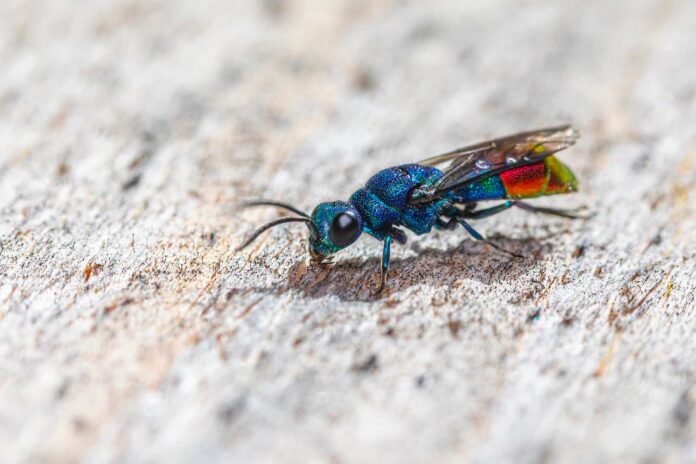We have discussed so many colorful animals before, and we are yet to discover another species today. Colorful wasps are out there, and you will find 10 of them in the list below. Perhaps they live around your area, or perhaps you have met them before as well. Feel free to take a look and see which wasp species you think is the most attractive.
1Apache Paper Wasp
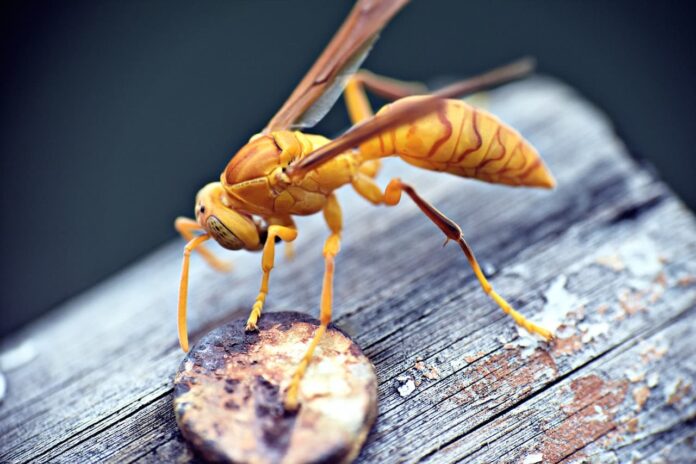
Apache paper wasps are golden brown in color, with a thin yellow border on the thorax. The abdomen of the wasps is golden brown and yellow, and they have dull orange-brown antennae. Also goes by the common name Texas paper wasp, this colorful wasp species is also quite dangerous. People consider them pests because they attack aggressively with their painful stings on farm laborers in fig orchards. They are more active during high daytime temperatures which is the time when stings are most common. Texas paper wasps are also common in vineyards as well. Native to North America, these wasps build their nests in or on houses in urban areas, especially in attics.
2Blue Mud Wasp
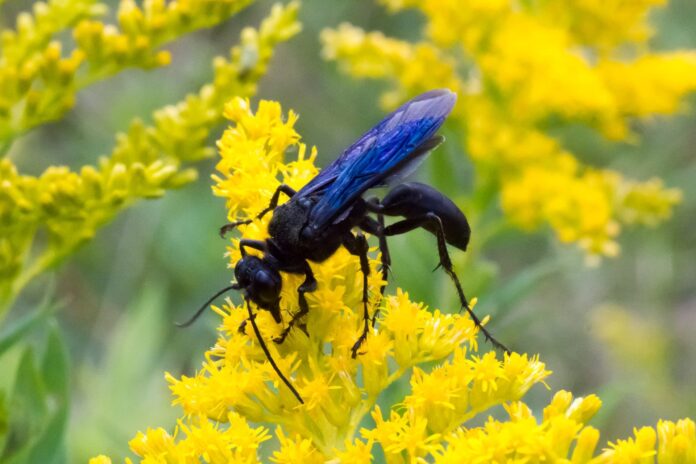
Blue is a very rare color in animals, and that makes blue mud wasps even more special. These colorful wasps are metallic blue, blue-green, or blackish in color. They have short narrow waists, and only females have an ovipositor which also means only females can sting. The good thing is that they are normally non-aggressive towards humans so you won’t have to worry much. Solitary female blue mud wasps build their own nests, where they store spiders they paralyze to lay eggs their eggs in. A female lays a single egg into a spider’s body, the larva will consume the spider from the inside when it hatches.
Adult males and females feed on nectar from flowers and honeydew secreted by insects. While females are solitary, males are sometimes found in a large congregation sleeping after “drinking” too much. Simply put, it is okay to come across many blue mud daubers as they are normally harmless to humans.
3Cuckoo Wasp
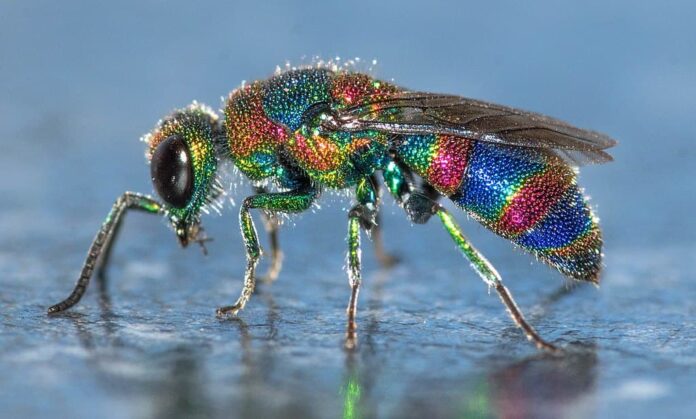
Cuckoo wasps aka emerald wasps have shiny bodies that are usually brightly metallic blue or green. Another unique feature is their flexible abdomen that allows them to curl if in danger just like an armadillo. While looking pretty, their ways of reproduction are rather on the ugly side. As kleptoparasites, cuckoo wasps lay their eggs in the nests of the hosts. The larvae will consume the host egg or larvae during its young stage. Not different from other wasps on the list, this one is also solitary.
These wasps are more common in dry areas and sandy soils where adults can rest or find a host to parasitize. Speaking of adults, they feed on honeydew secreted by aphids so they often hang out around aphid colonies. Cuckoo wasps like foods that are rich in carbohydrates so flowers are not their favorite menu.
4Eucharitid Wasp
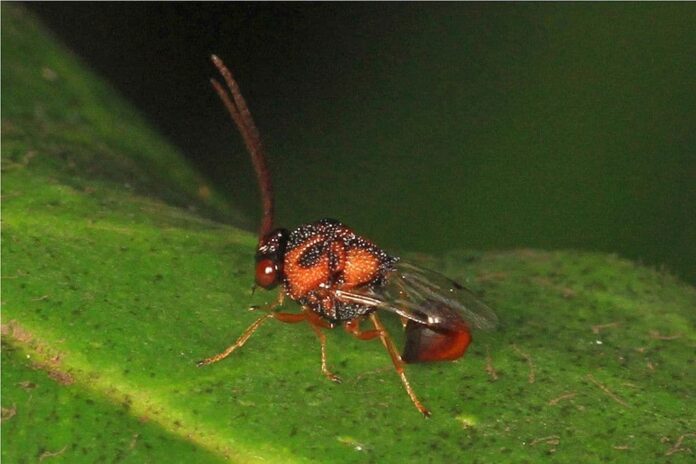
So glistening and shiny, Eucharitid wasps even have a decorative headpiece that makes them even more interesting to look at. Each wasp species has its own meal target, and the Eucharitid family attacks ants in immature stages. What’s different about them is that the females deposit their eggs away from the host. It could be in or on plant tissue such as flower buds and leaves. Known as first-instar larvae, they are very active, minute, and strongly sclerotized. Once the foraging ants transport the larvae to their nest when they attach to ant larvae, the horror begins.
These colorful wasps don’t look like this as the first-instar larvae, their stunning beauty blooms in their late instar stage. When they grow, they are strikingly ornate with numerous odd protuberances and swellings over their bodies. While looking so astonishing, these wasps are classified as pests for many reasons. During their first stage, their eggs dry up the leaves. If the females lay their eggs in tea leaves, the dry-up marks show, and tea does not have a strong flavor.
5Jack Spaniard Paper Wasp
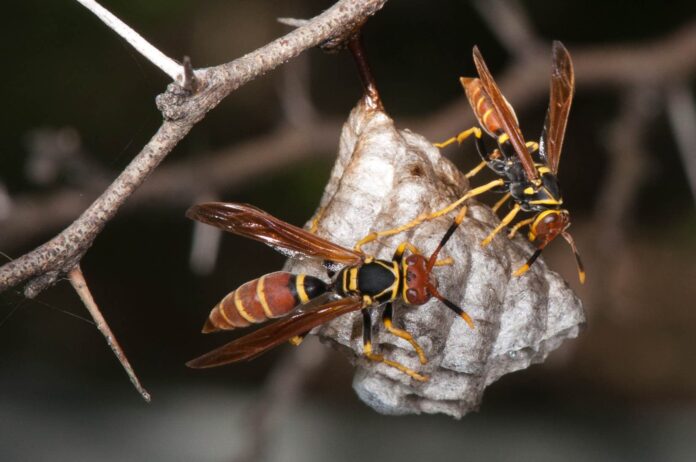
Jack Spaniard paper wasps are very large, with black and red coloration that you won’t mistake for something else. Adult Jack Spaniard paper wasps feed on pollen and sugary nectar, and they find caterpillars to feed their young. Because they feed on flowers, these wasps play many roles in nature as one of the most important pollinators. At the same time, these sweet-tooth insects also feed on sweet fruit as well. And since they hunt caterpillars, they also keep the caterpillars from destroying the plants as well.
As a species of paper wasp, Jack Spaniard paper wasps also build nests out of paper. Hence, it is common to come across them in caves, in large tree branches, and under awnings. No wasps are kind, but at least these ones only sting when they are defending their nests. The bad news is that their nests are everywhere; especially in dry spaces. What’s so frightening about wasp stings is that they can sting repeatedly which could be quite painful to experience.
6Jewel Wasp
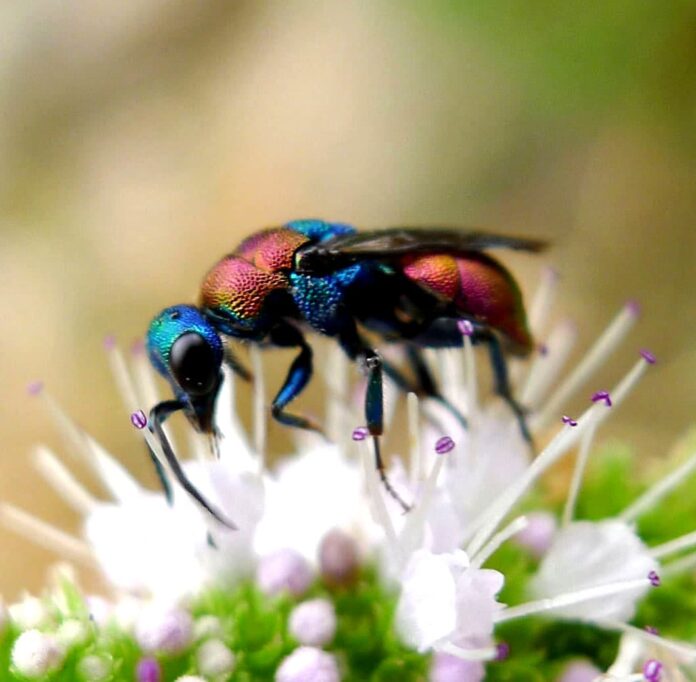
Looking absolutely stunning, these wasps have a metallic blue-green body with red second and third leg pairs. The exoskeleton of these wasps is very colorful and shiny, looking extremely attractive. Their natural habitats are where the temperatures are high year-round which is in Africa, South, Southeast Asia, and the Pacific Islands.
Emerald cockroach wasps or jewel wasps are solitary wasps that have very strange and unusual reproductive behavior. While most wasps use caterpillars or other bugs as the host for their larvae, this one uses cockroaches. The females sting to paralyze and then bite off half of the victim cockroach’s antennae to feed on the hemolymph. Simply put, they use the other half of the antennae to suck the “insect blood” from the roach.
Because they are smaller than the cockroaches, they will guard the paralyzed cockroach by pulling half of the antennae. If you come across one, it is nothing different from walking an animal on a leash. The larvae go through 4 stages, and the feeding begins from the legs of the cockroaches. In the end, the last instar larvae will feed internally before emerging and continue the life cycle.
7Neotropical Red Paper Wasp
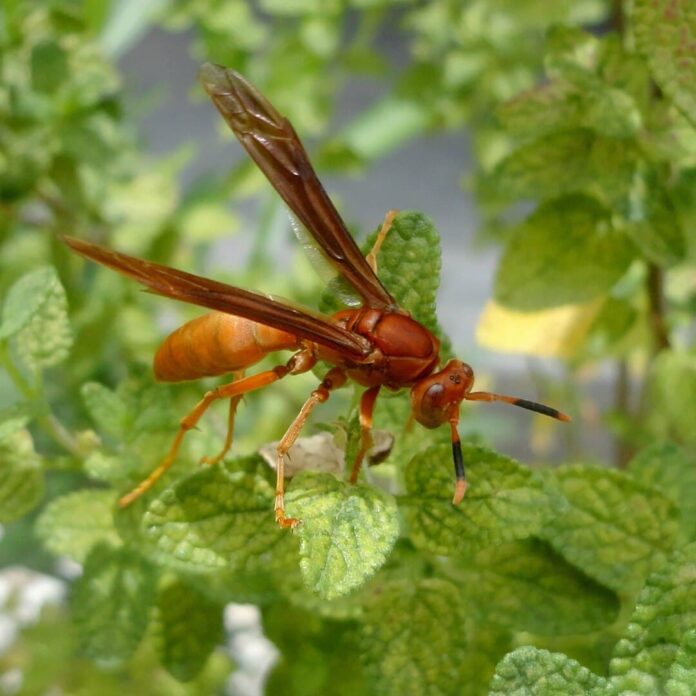
A Neotropical red paper wasp has a light to dark mahogany-brown body, with a light shade in the head and thorax sometimes. At the same time, it also has purplish-black wings with yellow markings which are quite easy to recognize. In general, red paper wasps are large which is quite scary for some because of their size and bright color. The thing is that they are neither dangerous nor aggressive towards humans because their venom can only inflict little pain for a short while.
The name says it all, this red paper wasp species comes from the Neotropical realm. They are eusocial wasps that live in colonies controlled by a queen of multiple combs that rear year-round. You are likely to find them in caves, dry sheds, woodlands, and even around households. And in case you see one on the perimeter of your home, make sure to call pest control instead of dealing with things by yourself. Where they live, worker wasps hunt for caterpillars and insects which they use to supply the adults in their colonies. As for the larvae, they feed on nectar.
8Norwegian Cuckoo Wasp
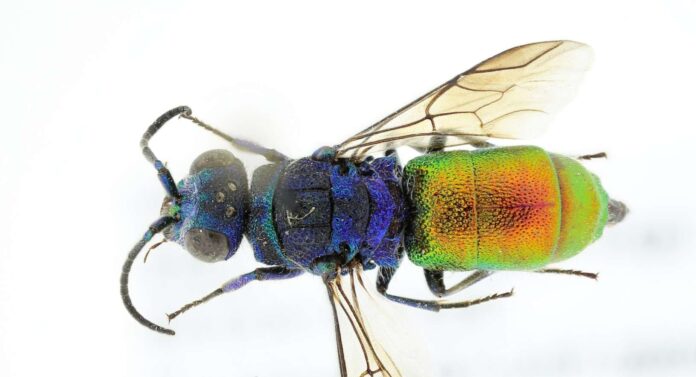
Here you are looking at the newly discovered cuckoo wasp species that is also one of the most colorful wasps. The fascinating thing about them is how harsh they are when it comes to reproduction. This species lay its egg in other bee and wasp nests, where their larvae hatch and eat their hosts’ developing offspring. The larvae of Norwegian cuckoo wasps grow very quickly, and they hatch before the hosts’ eggs. This is why they are able to eat the host’ eggs, larvae, and even the food supply in the nest.
Not different from other cuckoo wasp species, this one also has brightly colored iridescent carapaces that shine. Their head and mesosoma are blue or dark green with a possible presence of a golden green reflection. As for their habitats, these wasps live in a variety of areas including glades, meadows, mountains, and woodlands.
9Red & Black Mason Wasp
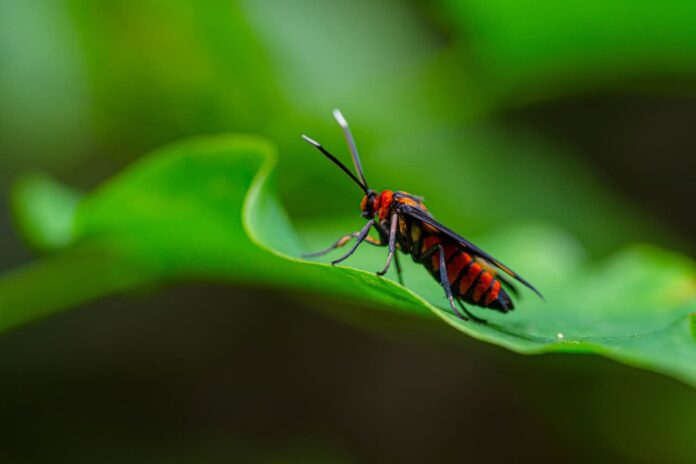
While a majority of colorful wasps on the list are large, this species is rather on the opposite side. Red and black mason wasps are relatively small wasps that have back and dull rusty-red coloration on their bodies. If we take a look at where they live, these solitary wasps inhabit abandoned nests, manmade structures, and tree crevices or holes. That is not all, this species is also known to make nests within keyholes or wooden fence cavities as well.
The important part is that they like to be around areas with flowering plants on which they can feed. What’s so good about them is that they play a crucial part in maintaining the population of pests including armyworms, cutworms, and loopers. Females will hunt and capture live caterpillars and carry them to their nest to store them as food for the larvae.
10Ruby-Tailed Wasp
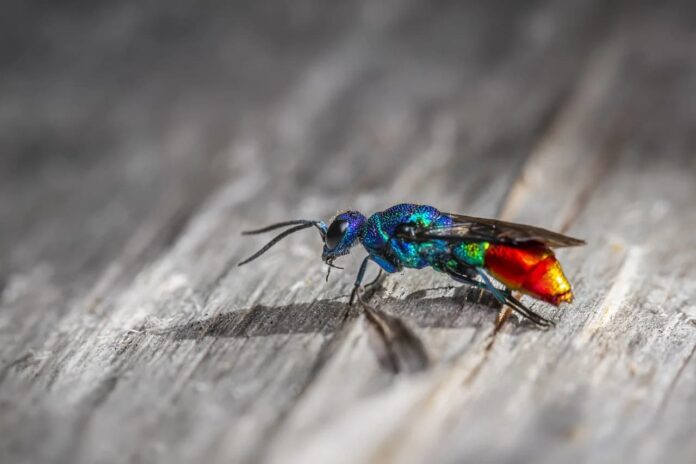
The name says it all, this wasp has a ruby-red that is almost pink color for its abdomen. A colorful body is one thing, and a very hard exoskeleton is another thing that makes this wasp species so incredible. Even cooler, they also have a concave underside of their abdomen that allows them to roll into a tight ball as well. Ruby-tailed wasps are solitary so they don’t live in social groups like many wasp species at all.
While being so strikingly stunning, these wasps are quite deadly for other solitary bees and wasps. This wasp species takes the poor insects’ nests and then lay eggs within the owners of the nests. That is not all, these wasps also consume the food that the hosts gather as well. Is this wasp that strong? Not always because they also come across strong angry adults in the nests sometimes. The thing is their strong exoskeleton allows them to protect themselves and stay safe.
Related Post: Colorful Animals To Stay Away From

